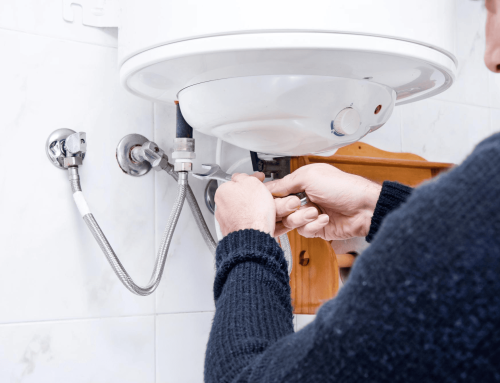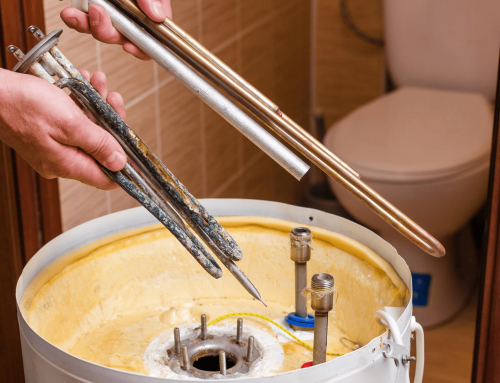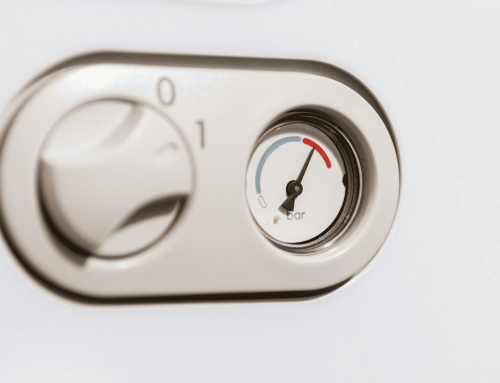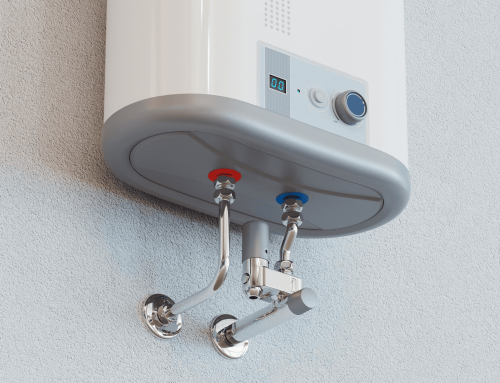The last two articles covered a lot, but the focus has been heating the home directly with air. Let’s talk about water.
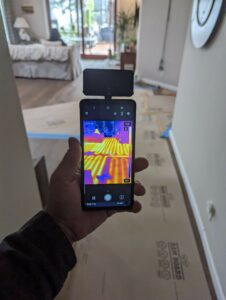 Water is a great medium for moving energy. It is readily available and thermally dense (contains a lot of thermal energy). A water pipe moves a lot of energy in very little space, and it is easy to handle. A pipe with an insulated outer diameter of less than 4 inches can move enough heat to keep up with the demand of a 2400 square foot home. To move the same amount of energy through an insulated duct, we would need 24 inches. This helps a lot when transferring energy throughout the house for radiant in-floor heating, radiators, baseboard heating and even hot water fan coils. Water is also each to control. If you have a home with radiators, radiant heat, or baseboard heaters, you may also have individual thermostats for sections or rooms of the house.
Water is a great medium for moving energy. It is readily available and thermally dense (contains a lot of thermal energy). A water pipe moves a lot of energy in very little space, and it is easy to handle. A pipe with an insulated outer diameter of less than 4 inches can move enough heat to keep up with the demand of a 2400 square foot home. To move the same amount of energy through an insulated duct, we would need 24 inches. This helps a lot when transferring energy throughout the house for radiant in-floor heating, radiators, baseboard heating and even hot water fan coils. Water is also each to control. If you have a home with radiators, radiant heat, or baseboard heaters, you may also have individual thermostats for sections or rooms of the house.
While water is a great medium for moving heat, there is a problem. Unlike a forced air system, the medium being heated is not heating us directly. If the fan coil in your bedroom heats the air to 105 degrees, you will be comfortable. If water is heated to 105 degrees, it needs to heat a radiator or the floor and then the heat is transferred to the living space. This means a higher initial water temperature is necessary to make these systems work. There are some forms of radiant heat that do not require water hotter than 115 degrees. There are also fan coils that use water and run just fine with 120-degree water. In both cases, there are multiple equipment options that are more than capable of transferring the energy needed.
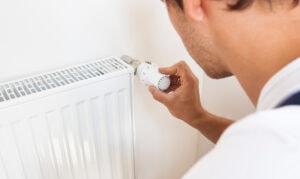
Higher temperature systems are harder to serve with a heat pump. Examples of hot water heating temperatures are as follows. If you have baseboard heaters, the boiler is probably set at 180 degrees. Some may even be set to 210 degrees. Radiators can be set as low as 140 degrees, but at a lower temperature, they deliver less heat. This would require either having more or larger sized radiators in the space to get the job done. There are also many radiant heat systems that require water delivery at 140 degrees or higher.
So, what can be done to serve these higher temperature systems? CO2 is becoming a common refrigerant and it is very environmentally friendly. There are commercial water heating systems that use CO2, and they will produce the high temperature water that businesses need. There is also a small hot water heating system that is geared for residential use that will produce hotter water. The commercial equipment often needs 3 phase power and residential homes rarely have that available. The commercial equipment is also not made to be compact or quiet. The smaller residential system works well and is quiet. However, the production rate is very low. In both cases we are talking about using a machine that is intended to supply domestic hot water to heat the home. It is possible, but difficult to build. While a CO2 system may supply hotter water, it is made to supply domestic hot water and usually has to pass through a secondary heat exchanger. Any heat exchanger creates loss so the water must be hotter on the source side of the heat exchanger to deliver the proper water temperature. A baseboard heating system that is designed for 180-degree water can work with a CO2 heat pump, but it will be slower and the heat pump will struggle in cold weather so back up resistance heat may be necessary.
Lower temperature hot water heating systems have more options, but the capacity tends to be lower as well. The largest residential air to water heat pump currently on the market produces a nominal 60,000 BTU. The smallest boiler you will find is 50,000 BTU, with most residential boilers in the 80,000+ BTU range. This means you may still need back up heat or multiple air to water heat pumps to get the job done. (Sanco (1 & 2) System)
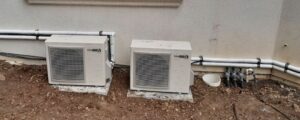
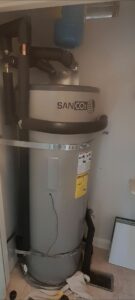
In either case, you will need the heat pump heat exchanger and compressor assembly outside, and a buffer tank, piping, and inside mechanical space. If you are building a new home, this is relatively easy to plan for. If you are retrofitting a system that currently uses a gas fired boiler, this can present a challenge.
This is an area that I think technology is going to change a lot. And soon. In California, water-based systems are less common, and it currently has the strongest push to move away from gas fired heating and towards all electric heating. As a result, this type of system is receiving less attention from the manufacturers than forced air heat pumps. As the push to go all electric becomes more substantial nationwide, I expect the manufacturers will develop more options for the homes on the East Coast and other areas where water-based heating systems are more common. I look forward to future technology with these types of systems. It will give me another reason to mess with the systems in my own home.



